
Any avid golfer who watches The Golf Channel has likely seen hundreds, if not thousands of golf infomercials. They're all quite similar - a spokesman who has 1-2 PGA Tour wins promises to fix your golf game, mid to high handicappers are shown with their swings magically being fixed, and they all seem to take place in Arizona with the mountains as a backdrop.
Their claims are ridiculous, and the product designs are even more laughable. But the truth is that there are tons of golfers buying them. Why do you think they keep purchasing advertising space? It works!
After years of seeing the same products over and over again, I decided I should do the golfing public a solid and test many of them out. So I racked up some charges on my credit card and ordered some of the usual suspects:
- GX-7 Metal
- Supersonic X10
- C3i Wedge
- B1 Blue Strike
- Square Strike Wedge
I gave all of them a fair shake and tested them out. In this article, I'll explore how each product performs against its claims, and whether or not any of them are worth purchasing.
GX-7 Metal
The GX-7 Metal is arguably the most popular of all the golf infomercial products in recent memory. I just had to know how this thing performed.
The Claims

The GX-7 people make some pretty bold claims, here are a few taken from their website:
- Boost your driving distance consistency vs. your current driver (no more feast or famine fluctuations from hole to hole)
- Improve your accuracy by leaps and bounds (making the fairway's center your personal domain)
- Turn even your worst miss-hits into decent shots (cutting down on those dreaded blow-up holes)
- Eliminate the need for separate swings (you can hit the GX-7 just like an iron)
- Help you keep up with (if not blow past) players who can swing faster than you (raising your confidence and lowering your scores)
My Testing
Granted, I am not the target market for the GX-7, but I wanted to try out the club to see what kind of results I got. I've tested a ton of equipment over the last several years and learned a lot about clubs from some of the best in the industry. I can tell you that many of the claims they make are very suspicious, similar to what we found with the Knuth High Heat Driver.
So I ordered a GX-7 in a stiff flex to accommodate my swing speed of about 105 mph with my driver.

The GX-7 driver is not particularly impressive when you see it in person; it looks like a budget golf club. The face is huge at address, which does give it the impression that it is very forgiving. After my first swing, I felt my eardrums were going to burst. This thing is LOUD at impact.

After five swings, something started to rattle inside of the clubhead. I know the club was designed for golfers with slower swing speeds, but something popping loose almost immediately is probably not a good sign.
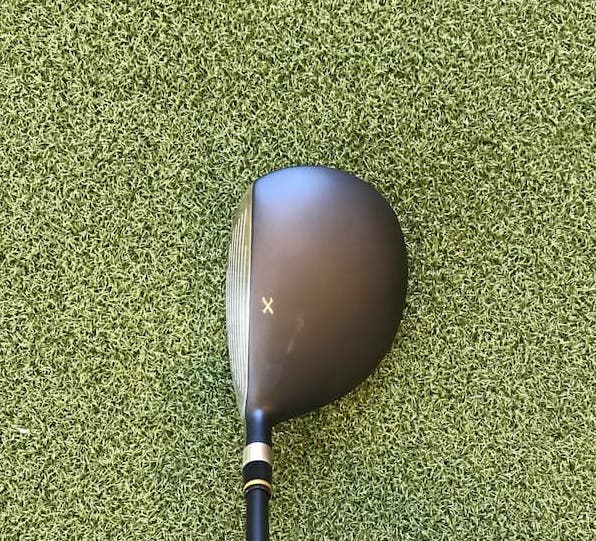
GX-7 Launch Monitor Data
I put the 14-degree GX-7 up against my Callaway Epic Flash Driver (12.5 degrees) using tees. Despite the commercial's claims, I had very little hope it would outperform on any important statistics. Here is the comparison that I saw:
You could see that the GX-7 was no match for my driver on pretty much any statistic. I will say that the dispersion was a little tighter, but that's to be expected since there was a significant difference in total distance. Surprisingly, I thought the club performed well for what it is, which is a 3-wood. These are pretty good launch numbers, and not far off from my current 3-wood (a Callaway XR Pro).
Using the club off the ground was a little less successful. The commercial claims that the GX-7 is as easy to hit off the turf as your 7-iron. I did not find that to be the case. It's about as easy to hit off the ground as a 3-wood, which can be hard for many golfers. I don't think there are any magical qualities in the GX-7 that will allow you to hit this better off the ground than any of the 3-woods from popular manufacturers.
Not Garbage, But Nothing Special
In my eyes, the GX-7 is not a complete disaster. But the rattling piece inside the head after several swings did give me pause about the quality of materials used.
I don't believe you'll find it as easy to hit as your 7-iron because it's a metal wood with a 43" shaft. I also don't think it will eliminate 4-5 bad drives a round; no club can promise that.
Based on what I saw, I think the company has manufactured a relatively forgiving 3-wood. Is it better than similar models from companies like Ping, Titleist, and Callaway? Probably not. But it's not terrible.
Because the commercial makes such outrageous claims, I do think a lot of golfers will be disappointed after purchasing this club and realizing it's not doing anything that special for them. If they had marketed this for what it is, then they likely would not have sold as many as they have over the last several years. Let's face it; if they keep running the commercials, they must be making money. Running ads for a run-of-the-mill 3-wood would likely not generate too much revenue.
Supersonic X10
Who doesn't want to add some clubhead speed? The Supersonic X10 says it can do it for you almost immediately.

Their Claims
Here are a few claims I took from their website:
- You'll get longer, straighter & more consistent throughout the bag
- It will boost your swing speed (and distance) more quickly than any training aid out there
- The SwingSpeedometer and SpeedSlider provide unmatched feedback and motivation
- Spend two months practicing with the Super Sonic X10 and you'll pick up at least 8mph and 20 yards off the tee
How Does It Work?
There are two main elements to the Supersonic X10 - the SwingSpeedometer (yes that's a real term) and the SpeedSlider.
You can see how it functions by watching this video:
The SwingSpeedometer (try saying that then times fast) shows you how fast you're swinging the club to provide instant feedback.
The SpeedSlider is the more critical element of the club. It has two functions - to work as a resistance trainer and promote more "lag" in your swing. There are ten settings on the dial, with one being the easiest and ten the hardest. The idea is that the slider will not release until you cross a certain swing speed threshold and "lag" the club. In theory, you're supposed to start with the easier settings as you build up speed and then move to the higher numbers.
The SpeedSlider also provides feedback on whether you are creating lag in your swing. You'll want to hear an audible clicking noise around the time you make impact. This is a common tactic used by several other training aids including the Impact Snap.
So in short, the Super Sonic X10 is trying to get you to swing faster, with more lag in your swing by providing feedback through the digital monitor and use of a slider that has different resistance settings.
My Testing
I'll cut straight to the chase; I did not like the Super Sonic X10 very much.

The main issue I had was that the SpeedSlider did not seem to function very well. I'm not sure if my product was defective, or if it's poorly designed, but I could not get the slider to release outside of the easiest setting (1 or 2).
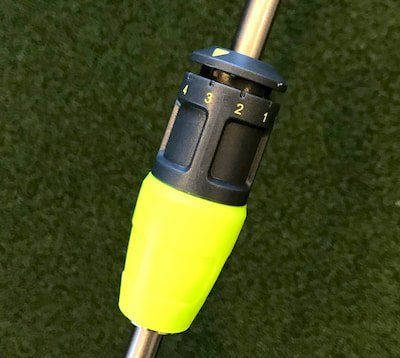
I doubt that it was my problem because my driver swing speed has been tested anywhere between 105-112mph depending on the length of the shaft I use. Additionally, I've seen my swing on video and in 3D motion analysis, and I certainly don't release my wrist angles too early.
So my main question is if a scratch golfer who has a relatively fast swing speed can't engage the primary function of the product, what does that mean for a golfer who swings much slower and doesn't create much lag with their wrists? My guess is they'll likely be frustrated and stop using it.
As a side note, I didn't find the SwingSpeedometer (there's that amazing word again) to be very accurate. The fastest reading I could get was 94 mph, and I know I'm swinging much faster than that. However, it might work on a relative basis since you can see if your numbers are increasing or decreasing.
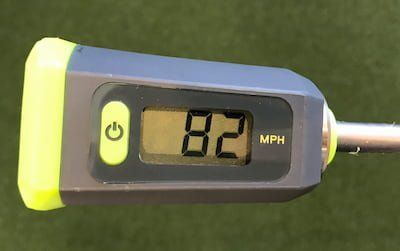
There's No System Here
Despite the product's poor functionality, my main issue is that there is not a great system here. If a golfer religiously practiced with the Super Sonic X10 and followed the videos on their site, it is possible they could see increases in swing speed. However, I'm not sure it would be because of the actual product itself, but rather the exercises. My hunch is that the vast majority of people who purchase it are not going to do it because there is not a system in place that's based on any research and the product seems to have some design flaws.
If you want the help of a training aid, I would suggest looking into SuperSpeed Golf. I've worked with it myself, and I believe it's far more effective. Also, it's designed based on the latest research that is used in numerous sports to help athletes increase their throwing motion. Phil Mickelson uses it (along with 350+ other pro golfers), and the results are there.
Additionally, I would suggest a golf-specific training program. The Titleist Performance Institute has a vast network of trained professionals that help give you a plan to train your body to be stronger, more flexible, and powerful. It's an excellent idea for injury prevention, health benefits, and to increase your clubhead speed. I'm currently doing workouts based on their philosophy, and there is a noticeable improvement.
Long story short, there are no quick fixes if you want to swing the golf club faster. You have to be prepared to do some work, and I'm just not sure the Super Sonic X10 is going to lead you down that path effectively.
C3i Wedge
The C3i Wedge touts itself as a savior for golfers who struggle with wedge shots in the bunkers and around the green.
The Claims
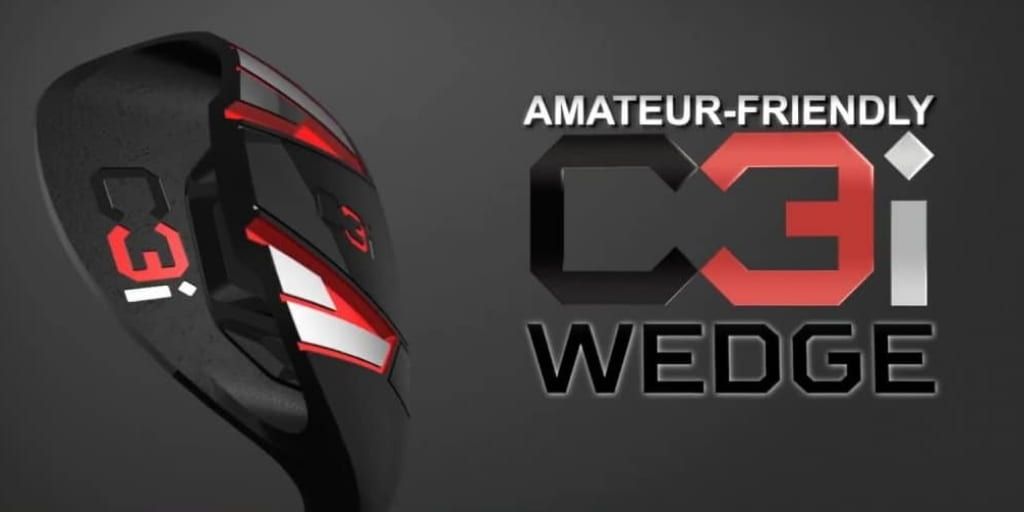
Here is what the C3i Wedge promises:
Get out of any bunker with a single swing
Practically eliminate fat shots within 50 yards of the flag
Aim directly at your target and attack without opening your stance or clubface
Handle any type of lie, from tight turf to fluffy bunkers
Play sky-scraping flop shots like a tour pro
Enjoy the same satisfying sensation of pure contact you get with a traditional wedge
Here is the commercial in case you haven't seen it yet:
Long story short, the club has a very exaggerated design with its sole and use of bounce that is trying to eliminate golfers from digging with the leading edge of the club. It also has 65 degrees of loft to help get the ball up in the air quickly.
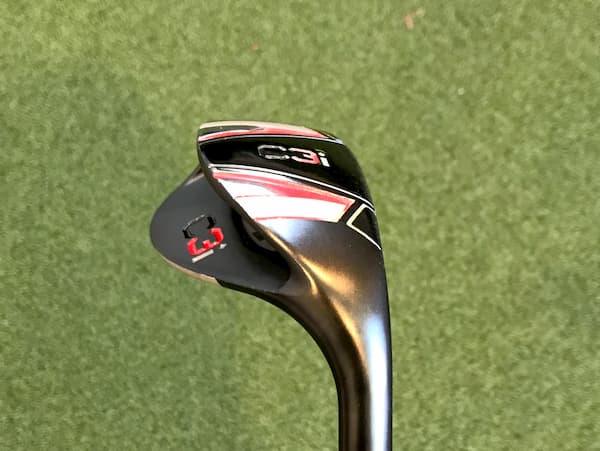
My Testing
I came into the C3i testing a little skeptical, but I have to say the club was one of the few infomercial products that surprised me. I would even go as far as to say that it does live up to some of the claims it makes.
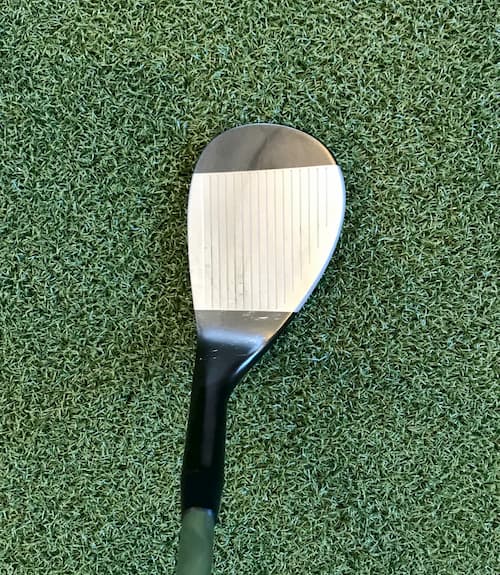
I tried the C3i from many lies in the short game facility at my course. I put it through tight lies on the fairway, fluffy lies in the rough, buried lies, and took plenty of shots out of various bunker lies. Also, I threw it on my launch monitor. Compared to my 60-degree lob wedge it did launch a little higher and had similar spin rates.
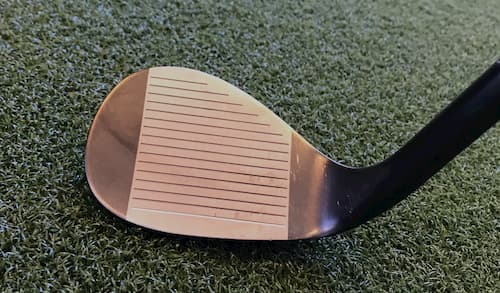
I'm no Seve Ballesteros out of the bunker, but I would consider myself an overall decent wedge player. I tend to deloft the club and expose the leading edge, so my sand wedge has extra bounce, and I'm a good candidate for a club like this. Out of the bunker, I thought the C3i performed very well. I did what the commercial said I could do, which was take a normal swing and let the club do the work. I didn't open the face up at all or make any "bunker swing." The ball popped out of the sand pretty nicely, and the sole did glide smoothly through the sand. You still can hit chunky shots, but I would say the club does a decent job of limiting them.
The C3i also did very well out of the rough; the ball gets up in the air very nicely without too much effort. There's a nice margin of error. If you're struggling with bunker shots and many other lies around the green, I do think this club can provide you some relief.
Some Caveats
Since the C3i Wedge has such an extreme design, there are a few things you're giving up. Because the sole of the club is so large, the leading edge of the wedge is raised off the ground a bit at address. If you have very tight lies on your course, it may result in some skulls. I found that to be visually intimidating when addressing the ball on a range mat or tight fairway lie.
I think you'll be giving up a lot of distance control as well using a wedge that has 65 degrees of loft. The wedge does get the ball in the air quickly, but you'll need a lot of precision with where you land the ball rather than allowing it to roll out more on the green.
Also, it will limit the versatility of shots you can play around the green. It's a bit of a one-trick-pony, similar to what I found the Square Strike wedge to be. The Square Strike can help you hit low-running chip shots reasonably well, and the C3i can get the ball airborne very quickly from many lies - but that's about all they can do.
Lastly, I don't think you can use this club outside of 40-50 yards because it has so much loft.
Who is the C3i Wedge For?
Modern wedge design has come a long way. Most wedges made by the major OEMs are easier to hit than ever. In a perfect world, I'd want golfers to be playing traditional designs because they are more versatile.
That being said, I know plenty of mid-to-high handicappers struggle mightily with bunker shots and various other lies around the green. I would say the C3i Wedge can help those players as somewhat of a last resort. If it's the choice between not getting the ball on the putting surface most of the time with a typical wedge, or being able to land more of your shots on the green with the C3i, then choosing the latter might not be a bad idea. But to be clear, I think learning the proper technique and using a regular wedge is the better route.
There are also some other options out there available with similar designs. Callaway has their Sure Out Wedge, and Cleveland has their Smart Sole design.
Overall, I was impressed by the C3i Wedge. While some of the claims might be a little exaggerated, I think this club delivers on its ability to get the ball up quickly out of various lies without perfect technique. I wouldn't call it magical though; don't expect to become Phil Mickelson overnight. You'll be making some tradeoffs because of the club's design, but if things are that bad for you around the greens, you might not even care. Additionally, the club looks funny so expect to take some flack from your buddies if you show up to the course with it.
B1 Blue Strike

The B1 Blue Strike training aid is one of the more popular "as seen on TV" products. Famed instructor Hank Haney endorses it, and its primary function is to help improve your impact position and prevent a popular swing flaw called scooping, which occurs when your hands are behind the ball at impact.
Their Claims
If you listen to their commercial, using the B1 Blue Strike several times will turn you into a world-class ball striker. Here are a few of the claims they make in their marketing materials:
- After just minutes of practice with the B1, the golfers made amazing progress in their ball-striking, distance, and trajectory.
- Fix This 1 Small Part of Your Swing (that you may not know is broken) for Tour-Level Impact, Pin-Rattling Accuracy & Unwavering Consistency
- The first training aid to ingrain all the elements of a tour-level impact position (and fix those frustrating flips)
If you want to learn more about how the product works, I suggest watching these series of videos with Hank Haney.
My Impressions
I'm not against what this product is trying to promote, which is to get you in a more functional impact position with your hands slightly ahead of the ball at impact. I've done this kind of practice myself, and it has shown very good results in my ball striking.

In my opinion, the issue with the B1 is that there is too much going on, and I think it will likely confuse golfers. There are three separate elements to the product:
- Impact Bow: A cable that stretches outside of the grip that is supposed to stay in contact with your lead wrist at impact
- Impact Slider: a slider that is supposed to click at the bottom of the club at impact, to provide audio feedback
- Compression Sole: Designed to force the golfer to lean the shaft forward at impact, or else they will make poor contact with the club
My main problem with the Blue Strike is that the first two elements are not very functional. The impact slider didn't seem to work for me. If I firmly attached it in place, which you're supposed to, it would not release while I swung. Then if I kept it loosely attached it would not work as designed. I'd chalk this up to poor product design and quality of materials (similar to what I experienced with the Super Sonic X10 slider).
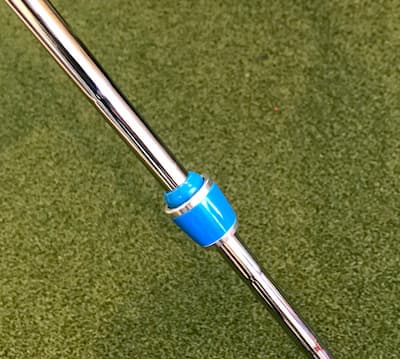
The impact bow seemed to be a bit finicky as well. I think it could provide some value, but can be easily cheated.

The actual clubhead itself does have value though. It's very similar to the design of The Tour Striker, which is a popular training aid. It's very difficult to strike it properly unless there is some forward shaft lean at impact, but I do believe it could be "cheated" a little more easily than a product like the DST Compressor, which I practice with myself.
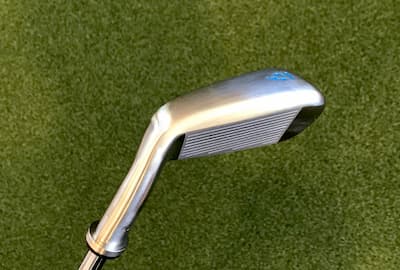
Long story short, only one of the three elements seemed to work. On top of that, if a golfer tries to satisfy all three of the elements at once, I think it would be overload, which begs the question why use this versus some of the other more popular impact trainers?
Your Money Might Be Better Spent Elsewhere
I don't dislike the B1 Blue Strike entirely, but I don't love it either. In my opinion, this product has the potential to overload recreational golfers, which means it could end up in the garage quickly.
There are several other products that might make more sense for you. The Impact Snap trainer, which you can read more about in my review, is probably better suited for a novice to intermediate ball striker. For more advanced golfers, I would probably recommend a product like the DST Compressor. It's much more difficult to use, but I do believe it produces real results. Perhaps a middle ground between the Impact Snap and DST would be the Tour Striker.
Square Strike Wedge
The Square Strike Wedge is another commercial you've likely seen several hundred times. It's designed to help golfers who are tortured by poor wedge play around the greens.
Their Claims
The Square Strike wedge is very similar to the chipper clubs you have seen for years. Except it's on steroids.
It is designed to function more like a putter with a very upright lie angle and heavier head. It has 45 degrees of loft, which is similar to a Pitching Wedge from many golf OEMs.
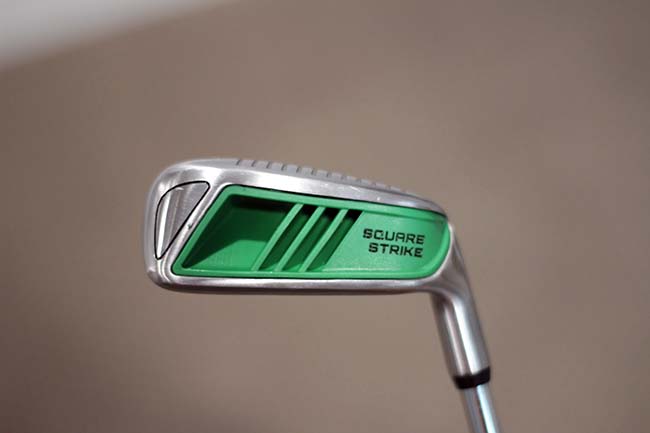
It has an enormous sole, which is supposed to prevent fat shots and help the club "glide" on imperfect strikes and challenging lies. Additionally, the leading edge is angled in a way to stop the club from digging. On top of that, they have moved the weight of the club all the way to the toe, which is intended to promote a pendulum motion.
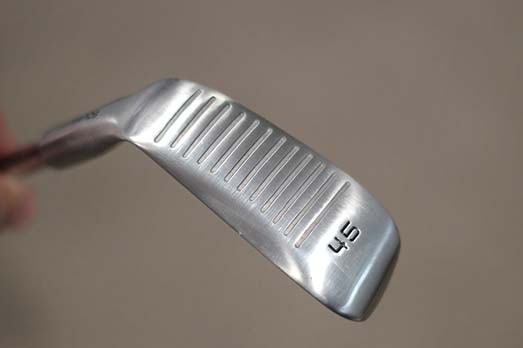
Long story short, they designed a club that is supposed to help golfers who get excessively "handsy" with their wedges. These players struggle with chunks and skulls that always lead to double bogeys or worse. The Square Strike promotes more of a putting motion, which is much easier for most golfers to reproduce around the greens.
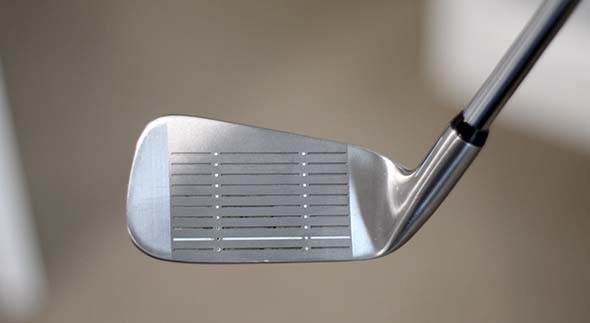
It's not a crazy concept by any means, or new, but you can't help but snicker at the club when you first see it.
It Works Pretty Well
I tested out the Square Strike wedge several times at the practice green at my golf course. I hit it from various lies that you would encounter on the fairway and in the rough. Despite my initial bias, the club performs very well.
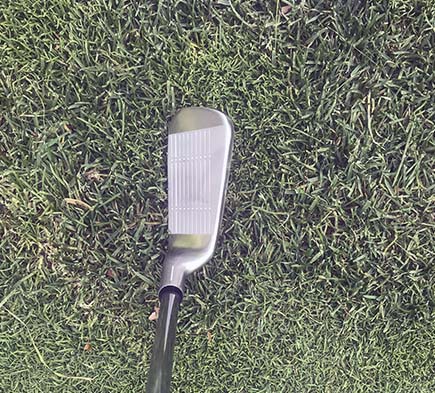
No matter what lies I threw at it, the Square Strike was very good at producing a low running shot. It had better feel than I anticipated, and the weight did not bother me that much.
There was a golfer next to me who was the perfect specimen to test on. He had an excessively long swing on his chip shots and was "flipping" the club with his hands. He agreed to take a few shots with the Square Strike, and he easily recreated the same low running shots I was hitting with it. The golfer told me, "it feels like a sledgehammer, but I would use it."
I believe this club can be very effective at getting the ball on the putting surface if you have plenty of green in front of you. Based on what I saw, I do believe golfers who struggle with these kinds of shots can benefit from using a club like this.
However, I do have some significant reservations about the Square Strike.
There Is No Versatility
The main issue with the Square Strike is that there is no versatility to the club. It is very effective at producing a low-running chip or pitch shot, but that is about all it can do. Now that is a critical shot to have on the golf course, but part of being a good wedge player is having shot options for many situations.
If you are using this club, that means you are giving up one space in your bag for another wedge.
I did try hitting 45-50 yard pitch shots with the Square Strike. Usually, I use my 60-degree wedge for those shots so I can land the ball softly on the green.
The Square Strike launched at a lower angle, with less spin, and reached a lower height. You would expect this because it has much less loft than my lob wedge. While it is easy to swing the club and make contact, you are going to get a lower running shot that will release quite a bit on the green. Again, that's not a bad thing; it just limits your options.
Who It Might Be For
I don't think the Square Strike is a gimmick. It might not be the mythical savior that the website and infomercials claim it is, but this club can help golfers. If you are someone who struggles with wedge shots around the green, to the point where it is debilitating, the Square Strike can likely provide some relief.
There is nothing more frustrating than being 20 feet off the green, and not being able to get the ball on the putting surface. It's one of the main reasons why recreational golfers post double bogeys or worse. If this club can help eliminate those shots (and your fear of them), who am I to tell you not to try it out?
Why I Wouldn't Necessarily Recommend It
The Square Strike is more of a band-aid, and I would only consider it as a last resort.
Modern wedges provide so much versatility around the greens, and they are easier to hit than ever because of improved design.
My recommendation for anyone who struggles with pitch or chip shots is to learn how to play them properly first. They're not terribly complicated, and with the right technique and practice, you can drastically improve. I would rather see golfers do that first than purchase a club that limits the kinds of shots you can play and not allow you to develop your wedge technique.
But I know it's not a perfect world, and that might not be in the cards for many of you.
Wrapping It Up
Golf is all about managing expectations. All of these products make such big claims that it's almost impossible for golfers not to be disappointed by how they work. Luckily they all offer money-back guarantees, and I hope golfers take advantage of the offer if they're not satisfied instead of letting them collect dust.
On the whole, I can't strongly recommend any of these products. Some of them were a bit junky and suffered from poor design and material quality. While others weren't all that bad, I viewed them as a last resort for struggling golfers (C3i and Square Strike).
So the next time you see one of these commercials and are tempted to buy one of these products, just remember that the reality might be a little less exciting than their claims.
We care about the protection of your data Read our Privacy Policy